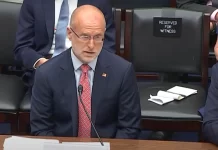State Sen. Dan Dawson, chair of the Iowa Senate Ways & Means Committee, speaking before the Iowa Taxpayers Association (ITA), stated that his tax policy goal for the 2022 legislature is to create a “21st century model” that will create the best tax climate in the nation, according to The Courier.
“We have the opportunity to do a tax reform moonshot here in Iowa,” Sen. Dawson stated. Dawson is correct that Iowa has a historic opportunity to enact significant pro-growth tax reform that will allow more taxpayers to keep their money and make the state more competitive.
The reason for this historic opportunity is Iowa’s strong fiscal foundation. The budget is running a $1.24 billion surplus, which also means that over $1 billion remains in the Taxpayer Relief Fund. In addition, both the Cash Reserve Fund and Economic Emergency Fund (sometimes collectively referred to as Iowa’s “Rainy Day Funds”) are filled to their statutory limits with a combined $800 million.
Debate is already taking shape over how to use the massive surplus. Some argue that policymakers should only do targeted tax cuts while expanding support for the Earned Income tax credit and other property tax credits. Other suggestions include returning the surplus to taxpayers in the form of rebate checks, which would be similar to a one-time stimulus payment.
However, Sen. Dawson argues that the historic surplus be used to create a five year tax reform plan that continues to lower high income tax rates. During the ITA legislative panel, Sen. Dawson argued that it would be a “lost opportunity” if the legislature only does across-the-board rate cuts or a one-time tax rebate.
Based on the Taxpayer Relief Fund, the legislature is tasked with returning that money to taxpayers, and Sen. Dawson is correct that policymakers cannot waste this opportunity. Legislators have the opportunity to build upon the comprehensive tax reform law that was passed in 2018, which began to lower both the individual and corporate income tax rates.
Gov. Kim Reynolds has also stated that tax reform will be a major priority for her during the 2022 legislative session. Gov. Reynolds understands that not only is Iowa in competition with other states, but numerous states are cutting their tax rates, and Iowa cannot afford to become complacent.
Sen. Dawson’s approach of crafting comprehensive tax reform to provide tax relief, lower rates, and create a more competitive tax code is the correct approach. Sen. Dawson even signaled that Iowa’s high corporate tax rate needs to be lowered. He also understands that any tax relief must be associated with prudent budgeting. Sen. Dawson told ITA members that even though he supports lowering the corporate tax rate, he correctly believes that tax credits and incentives need to be evaluated.
“I have no interest in lowering current corporate rates without substantially reforming some of our incentives and credits,” Dawson said. In crafting a comprehensive tax reform plan, there should be no “golden calves” that are allowed to remain on the table.
Iowa can learn from other states, such as North Carolina, which represents the gold standard for state tax reform. For several years, North Carolina has lowered both its individual and corporate tax rates, along with reforming its tax code to make it more competitive. Recently, the North Carolina legislature approved a measure that will lower the individual income tax rate from 5.25% to 4.99% and will continue to be gradually reduced until it reaches 3.99% in January 2027. Likewise, the corporate tax, which is the lowest in the nation at 2.5%, will be phased out by 2023.
Since 2013, North Carolina has been enacting comprehensive pro-growth tax reforms. A crucial reason for their success has been to balance tax reform with conservative budgeting.
“Sensible tax cuts and honest, conservative budgets” were the foundation of North Carolina’s successful tax reform. This was also the major lesson from Kansas. A state cannot cut tax rates and increase spending. “The supply-side effects of fiscal policy are real, but they don’t negate the need for spending discipline,” wrote John Hood, chairman of the John Locke Foundation in North Carolina, in the Salisbury Post.
Navigating tax reform is never easy, but Sen. Dawson is on the right path in working on a comprehensive tax reform plan rather than just a one-time rate cut or sending out rebate checks. The Taxpayer Relief Fund will allow policymakers to make a substantial tax cut, and tools, such as properly designed revenue triggers can work to ensure that rates continue to be lowered.
A legislator from North Carolina correctly described tax reform as an “evolution, not a revolution.” Gov. Reynolds and Republican legislative leaders have stated that their ultimate goal would be to eliminate the income tax. This is a noble policy goal, but it will take time. Over 50% of fiscal year 2022 revenues are generated from income tax. Iowa relies heavily on income tax, which will make eliminating the tax that much more difficult.
Nevertheless, Iowa can learn from states such as North Carolina, Utah, Indiana, among others, all of which have income taxes, that pro-growth tax reform can occur without eliminating the income tax.
Iowa does have a moonshot opportunity to enact historic tax reform and provide lasting tax relief to taxpayers while making our state more economically competitive.
John Hendrickson serves as policy director for Iowans for Tax Relief Foundation.
Originally published by The Center Square. Republished with permission.










